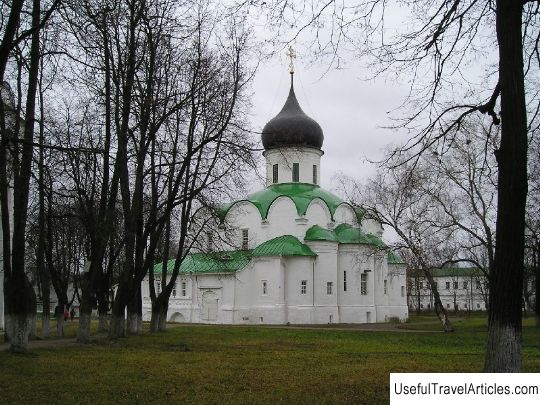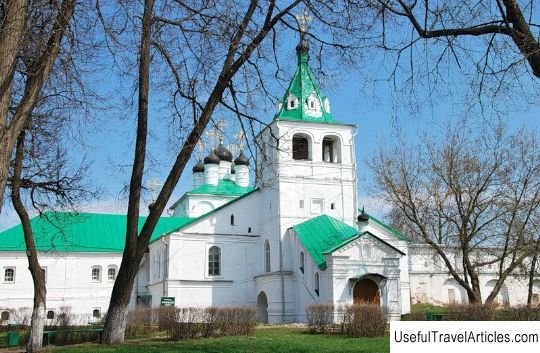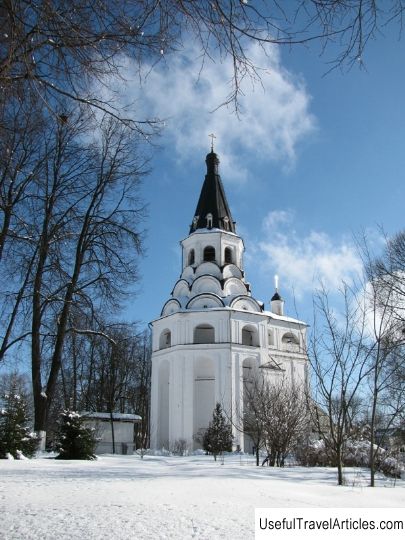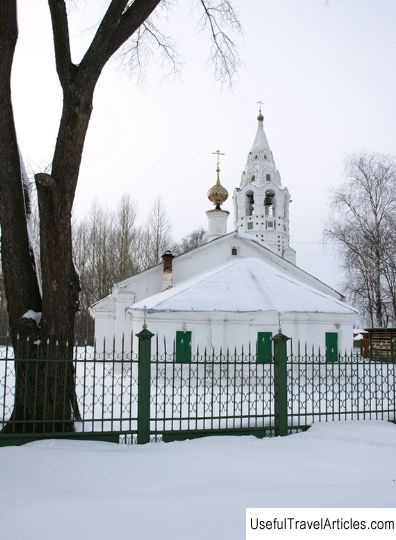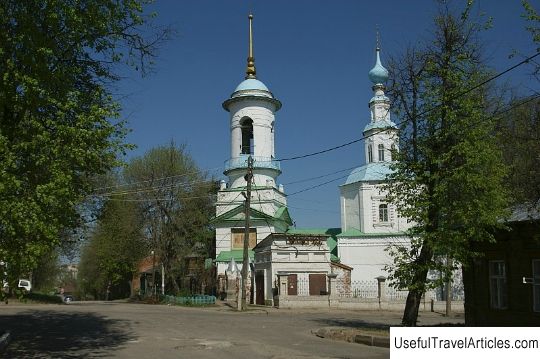Intercession Church of the Alexander Kremlin description and photos - Russia - Golden Ring: Alexandrov
Rating: 8,5/10 (456 votes) 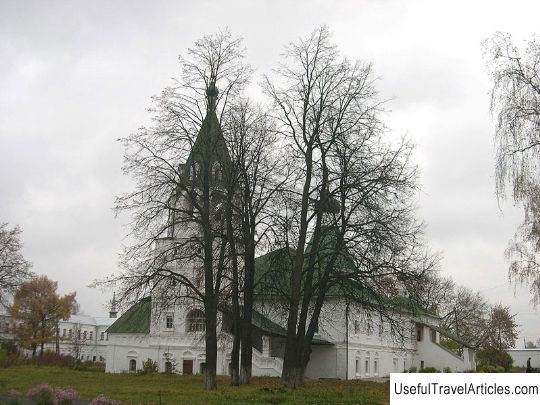
Church of the Intercession of the Alexander Kremlin description and photos - Russia - Golden Ring: Alexandrov. Detailed information about the attraction. Description, photos and a map showing the nearest significant objects. Photo and descriptionBetween the cell building and the Assumption Church, in the center of the Alexander Kremlin, there is the Intercession Church with a refectory adjoining the ancient quadrangle from the west. The refectory was built on earlier cellars, in the 17th century. it took the place of a vast chamber of the 16th century, traces of its corrugated vault remained in the north aisle. The ancient part of the church, except for the octagon with a tent above it, the eastern part of the basement and the northern chamber, is located inside the building of the 17th century. Its ancient octagon with a squat squat tent, which is considered the prototype of all future tent-roofed temples, drowned in these buildings. It is not known when the Intercession Church was built. A.I. Nekrasov believed that the time of its construction was the 1550s, in his opinion, this temple was the home church of Tsar Ivan IV. Modern research assigns the construction of the church to an earlier time - approximately 1525-1529. In the central apse, in the tent of the church and in the slopes of the western window, frescoes of the 16th century are partially preserved. In 1863, with funds allocated for the temple by the merchant Zorina, the walls of the temple were covered with mediocre painting. The old iconostasis was replaced with a new one. A four-tier bell tower adjoins the refectory from the west. Above it is a bell octahedron with a hipped roof. A clock was previously installed on the bell tower, the principle of which was based on the reckoning of time at sunset and sunrise. Some parts of their mechanism are now in the watch cell and the local museum. The bell tower of the Intercession Church is the simplest version of the Moscow type of bell towers of the second half of the 17th century. In some places it is decorated with colored tiles. Through it, a staircase leads to the refectory. Under the western wall of the quadrangle in the basement of the church, there is a niche that resembles an arkasolium in ancient temples. Presumably, someone from the royal or princely family was buried here. Currently, the arkasolium is empty, so it is not possible to establish who exactly was buried here. In 1960-1964, the Church of the Intercession was restored by employees of the Vladimir Scientific Restoration Workshop. They restored white-stone cellars, a pillar of the church, a refectory, basements. The roof of the refectory was redesigned to have a four-pitched roof. The tent was overhauled - it was re-covered with a ploughshare - with aspen planks (in the 1980s, the ploughshare was changed again), the basement of the building was dug and a concrete blind area was made, the approach to the church was laid out with slabs, crosses and chapters were gilded. The room was insulated with mineral wool slabs. In the mid-1980s - early 1990s. The Church of the Intercession was restored again. The interior of the main space of the church and the frescoes of the tent were restored. A big problem was caused by deformations of the northern wall of the building, which resulted in deep cracks in the second tier of the main refectory room. The floors in the refectory were replaced, the carpentry fillings of the windows were replaced, and work was carried out to restore normal temperature and humidity conditions. The general repair works on whitewashing and putting in order the premises for the museum exposition were completely done, the roof and the facade of the main building were updated. Scientific advisers and architects who took part in the restoration: Sherstobitova L.E., Efimov D.V., Dvoeglazova T.A., engineers Shchelokov O.O., Ershov E.Ya. Engineering and geological surveys were also carried out to identify the causes of soaking, as well as deformation of ancient basements. p> In the 1990s. in the Church of the Intercession by probing the plaster outline by the famous scientist V.V. Kavelmakher discovered the remains of a stone portal of extraordinary beauty. Careful opening of the portal confirmed the assumption that Italian Renaissance masters also took part in the construction of the temple. It became possible to more accurately determine the time of the construction of the temple and all stages of its construction. Such a find became key for the reconstruction of the church building and made a significant contribution to the study of the history of the Alexandrova Sloboda.
        We also recommend reading Cathedral of San Lorenzo (Cattedrale di San Lorenzo) description and photos - Italy: Alba Topic: Intercession Church of the Alexander Kremlin description and photos - Russia - Golden Ring: Alexandrov. |
